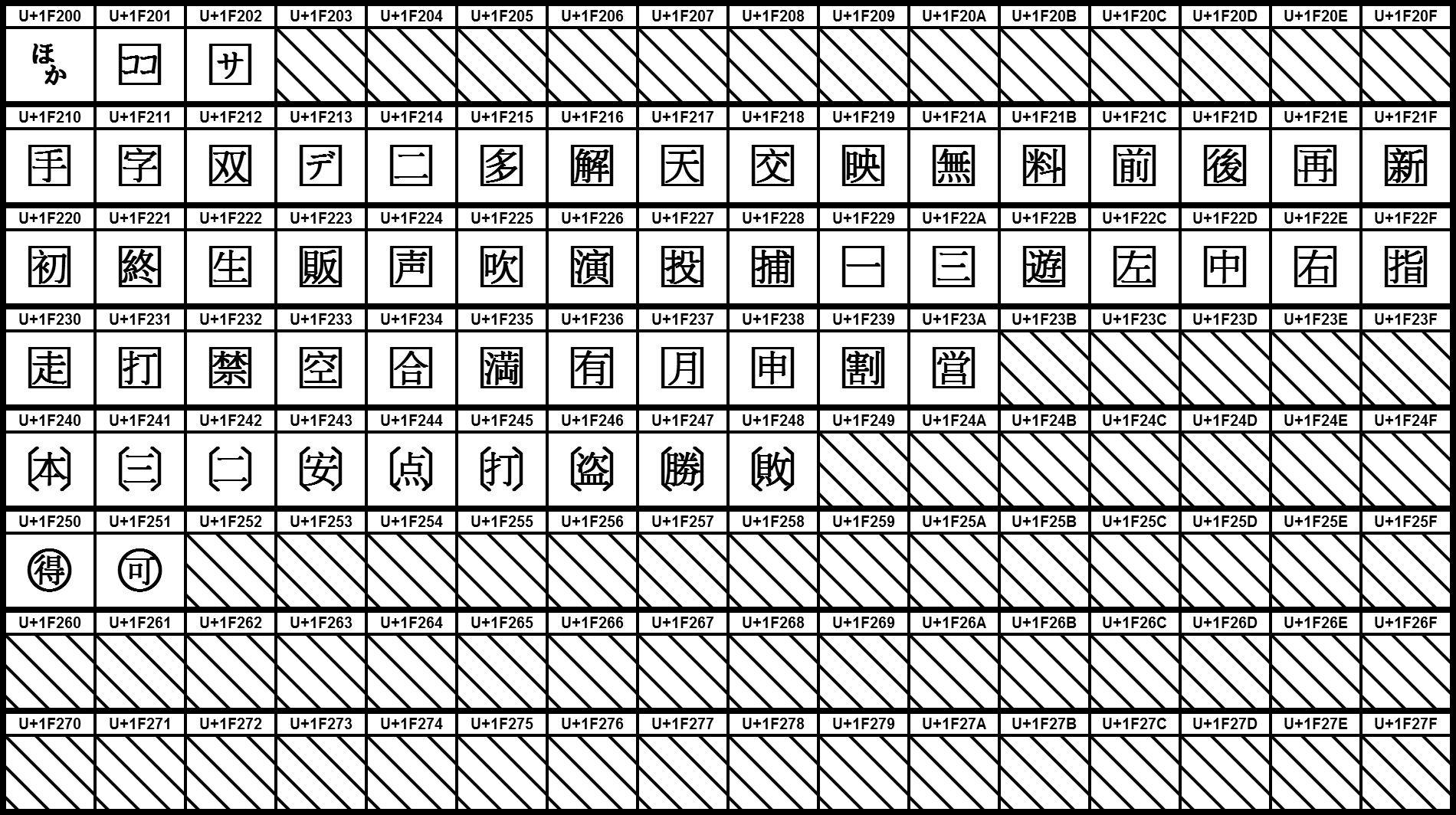Enclosed Ideographic Supplement on:
[Wikipedia]
[Google]
[Amazon]
 Enclosed Ideographic Supplement is a
Enclosed Ideographic Supplement is a
 Enclosed Ideographic Supplement is a
Enclosed Ideographic Supplement is a Unicode block
A Unicode block is one of several contiguous ranges of numeric character codes (code points) of the Unicode character set that are defined by the Unicode Consortium for administrative and documentation purposes. Typically, proposals such as the ...
containing forms of characters and words from Chinese, Japanese and Korean enclosed within or stylised as squares, brackets, or circles. It contains three such characters containing one or more kana
are syllabary, syllabaries used to write Japanese phonology, Japanese phonological units, Mora (linguistics), morae. In current usage, ''kana'' most commonly refers to ''hiragana'' and ''katakana''. It can also refer to their ancestor , wh ...
, and many containing CJK ideographs. Many of its characters were added for compatibility with the Japanese ARIB STD-B24 standard. Six symbols from Chinese folk religion
Chinese folk religion comprises a range of traditional religious practices of Han Chinese, including the Chinese diaspora. This includes the veneration of ''Shen (Chinese folk religion), shen'' ('spirits') and Chinese ancestor worship, ances ...
were added in Unicode version 10.
Block
Emoji
The Enclosed Ideographic Supplement block contains fifteenemoji
An emoji ( ; plural emoji or emojis; , ) is a pictogram, logogram, ideogram, or smiley embedded in text and used in electronic messages and web pages. The primary function of modern emoji is to fill in emotional cues otherwise missing from type ...
:
U+1F201–U+1F202, U+1F21A, U+1F22F, U+1F232–U+1F23A and U+1F250–U+1F251.
The block has eight standardized variants defined to specify emoji-style (U+FE0F VS16) or text presentation (U+FE0E VS15) for the
following four base characters: U+1F202, U+1F21A, U+1F22F and U+1F237.
History
The following Unicode-related documents record the purpose and process of defining specific characters in the Enclosed Ideographic Supplement block:See also
*CJK Unified Ideographs
The Chinese, Japanese and Korean (CJK) scripts share a common background, collectively known as CJK characters. During the process called Han unification, the common (shared) characters were identified and named CJK Unified Ideographs. As of Uni ...
* Hiragana (Unicode block)
* Katakana (Unicode block)
References
{{CJK ideographs in Unicode Ideographic Supplement, Enclosed